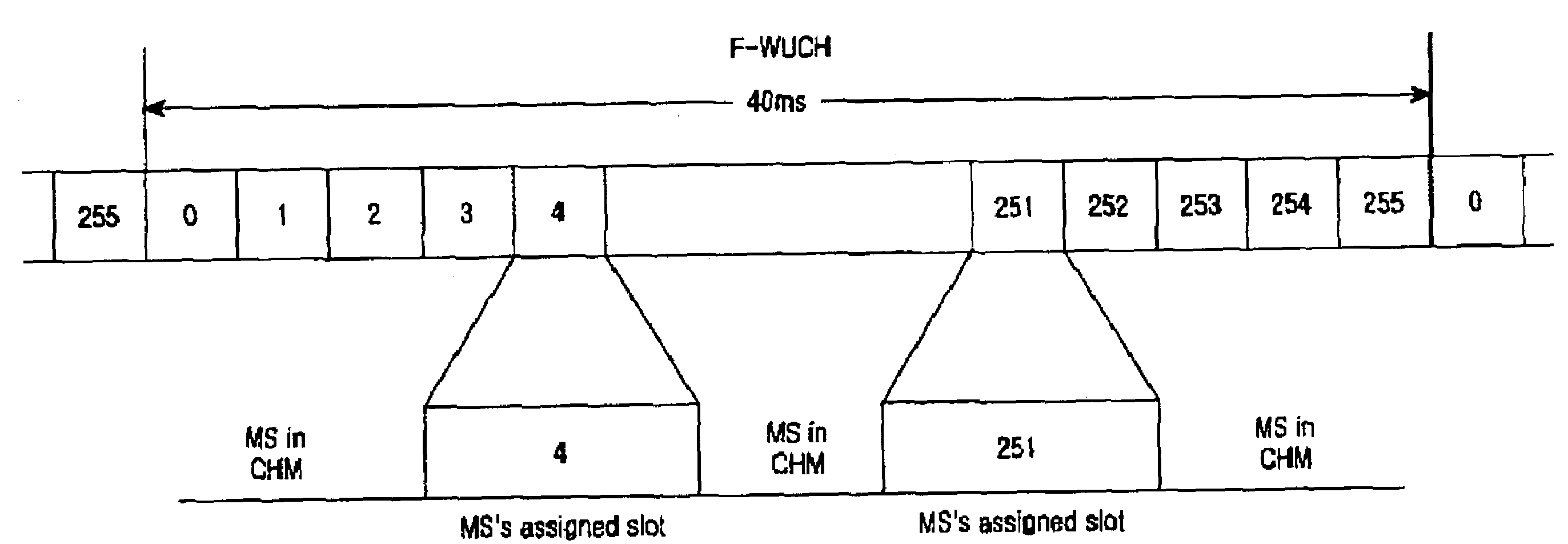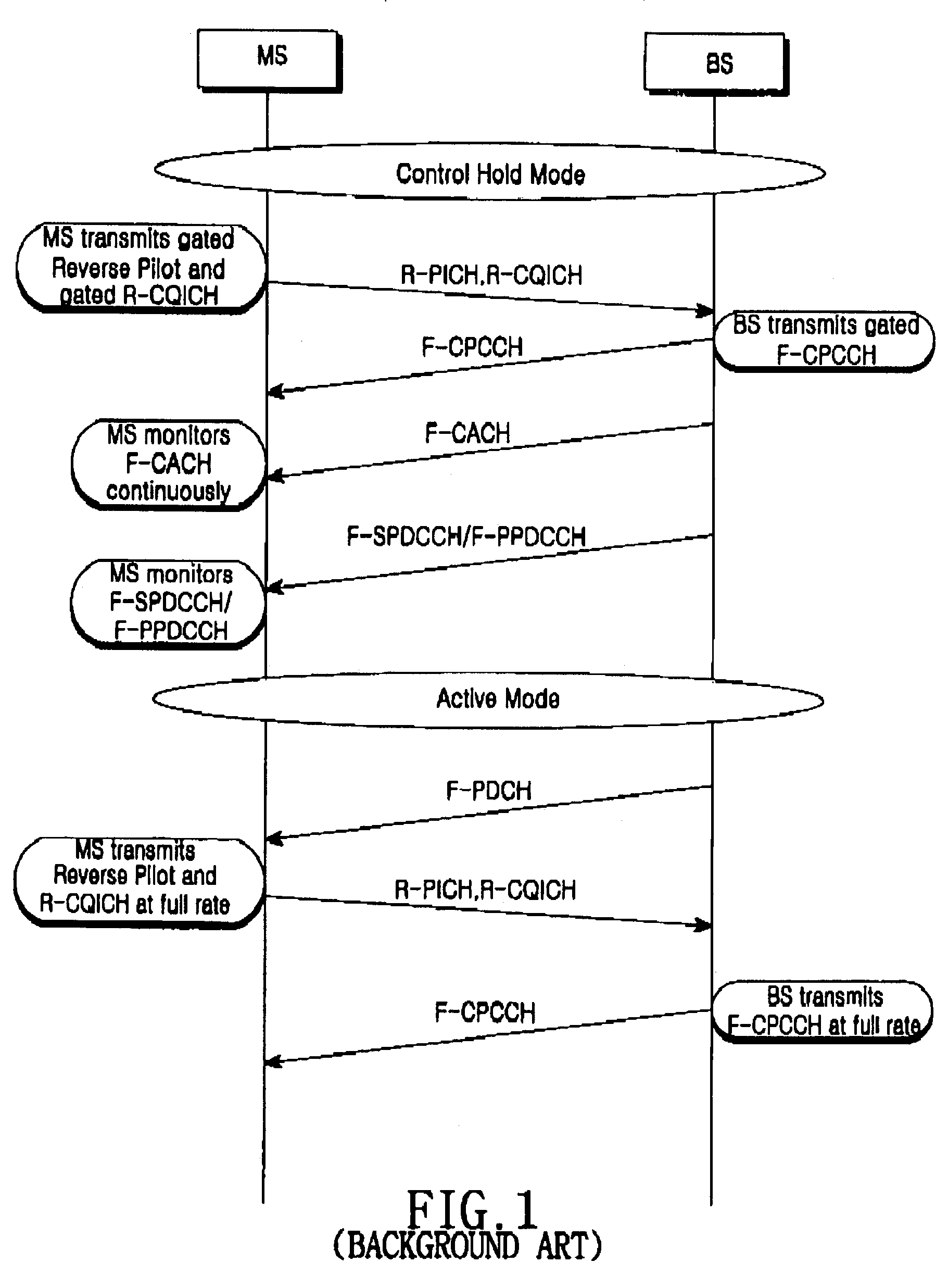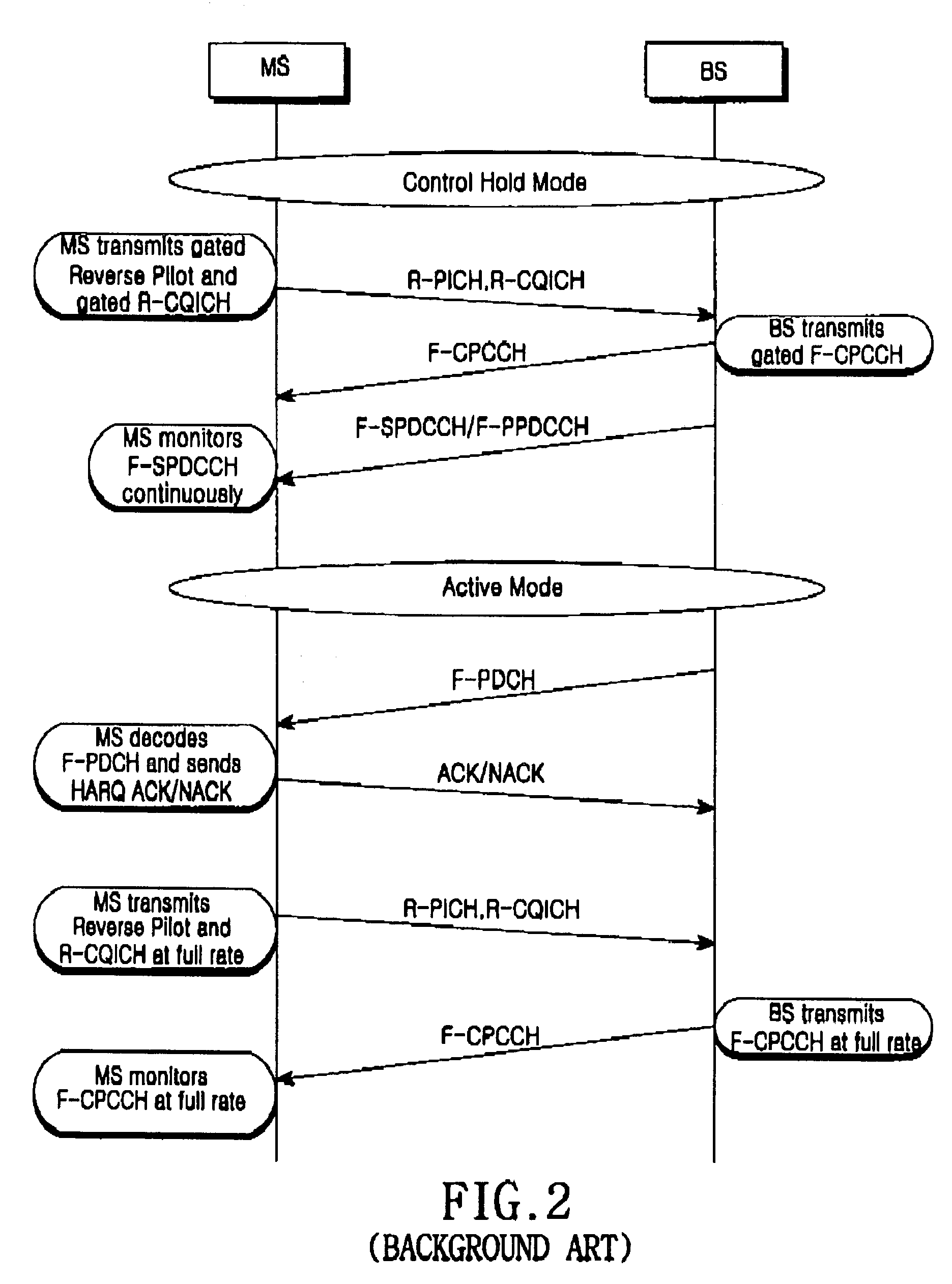Mode transition method for wireless data service in a mobile station
- Summary
- Abstract
- Description
- Claims
- Application Information
AI Technical Summary
Benefits of technology
Problems solved by technology
Method used
Image
Examples
first embodiment
[0050]First, a description will be made of a first embodiment where the WUI transmitted over F-WUCH is comprised of a single indicator bit.
[0051]FIG. 7 illustrates a structure of F-WUCH transmitting a single indicator bit according to a first embodiment of the present invention. Referring to FIG. 7, F-WUCH periodically transmits 40 ms frames each having 256 slots. Each slot has a length of 0.15625 ms, and a particular slot (e.g., a slot with a slot index 128) in each frame is assigned to a particular mobile station. The mobile station in a sleep mode wakes up at the assigned slot to detect an indicator bit, and then returns to the sleep mode if the bit indicates no data. Since the indicator bit has a very short length compared with an F-PDCCH message, a time period where the mobile station wakes up to detect the indicator bit is very short, so that the time period is negligible in terms of power consumption. If the indicator bit does not indicate an instruction for monitoring the F-...
second embodiment
[0057]Next, a description will be made of a second embodiment where the indicator WUI transmitted over F-WUCH is comprised of two indicator bits.
[0058]FIG. 11 illustrates a structure of F-WUCH transmitting two indicator bits according to a second embodiment of the present invention. Referring to FIG. 11, as described in conjunction with FIG. 7, F-WUCH periodically transmits 40 ms frames each having 256 slots. Here, particular slots (e.g., slots with slot indexes 4 and 252) in each frame are assigned to a particular mobile station. The two slots each transmit one indicator bit, and a mode transition condition of a mobile station based on the two indicator bits is illustrated in FIG. 12.
[0059]Referring to FIG. 12, a mobile station in a sleep mode wakes up at a first assigned slot on each frame and detects a first indicator bit. If the detected first indicator bit is “0(OFF),” the mobile station maintains the sleep mode until a first assigned slot on the next frame. Otherwise, if the d...
PUM
 Login to View More
Login to View More Abstract
Description
Claims
Application Information
 Login to View More
Login to View More - R&D
- Intellectual Property
- Life Sciences
- Materials
- Tech Scout
- Unparalleled Data Quality
- Higher Quality Content
- 60% Fewer Hallucinations
Browse by: Latest US Patents, China's latest patents, Technical Efficacy Thesaurus, Application Domain, Technology Topic, Popular Technical Reports.
© 2025 PatSnap. All rights reserved.Legal|Privacy policy|Modern Slavery Act Transparency Statement|Sitemap|About US| Contact US: help@patsnap.com



